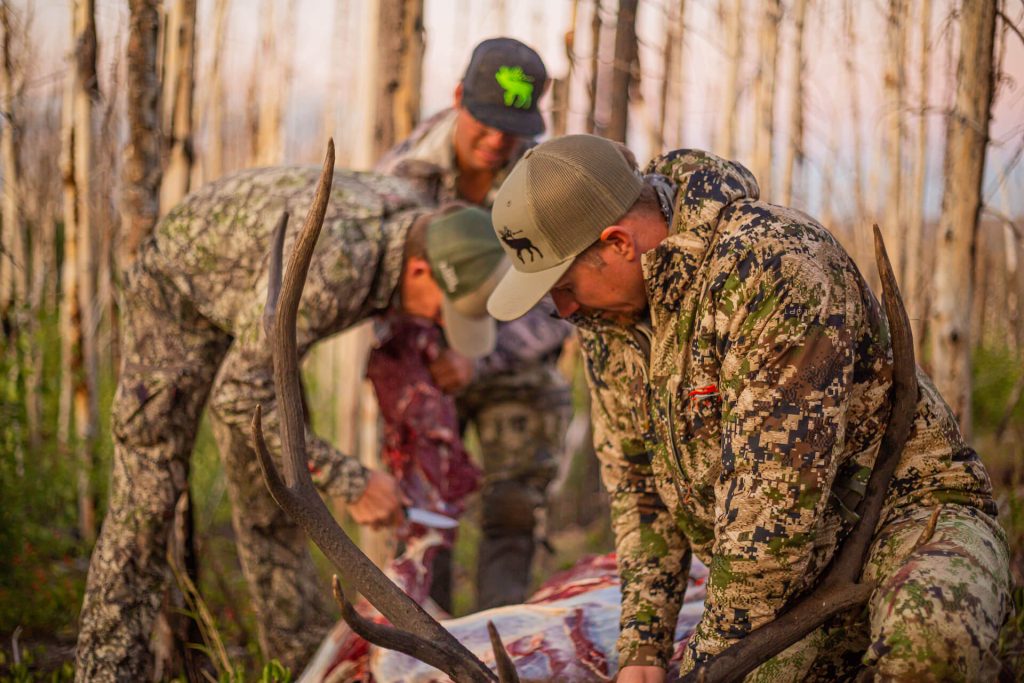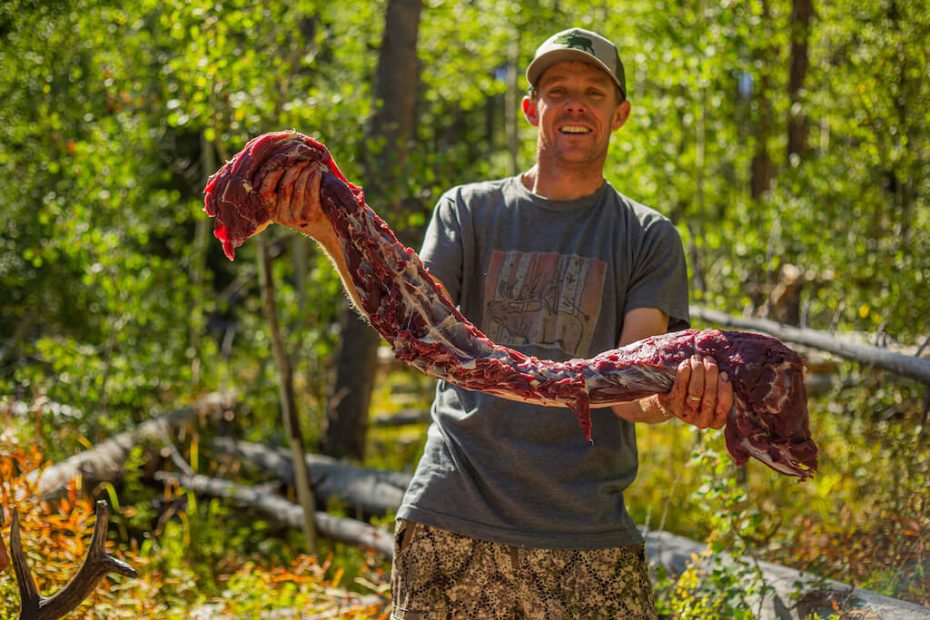
The meat processor was flat pissed. He rolled his eyes as he pulled the hacked-at quarters, straps, and tenderloins from the game bags. I was young — in my early twenties — and very inexperienced. I was just proud I’d got the bull off the mountain.
He pointed a crooked finger at me and said, “This young man, well, this is going to cost you double.”
I was embarrassed and apologized. At that moment, I caught a little tenderness in the old butcher’s eyes, and he sat me down and taught me all about proper meat care. Every processor since has applauded my efforts, and I can promise you the more TLC you give your meat in the field, the better table fare it will make.
Keep It Clean
When the animal is down, the work begins, and the most critical part of the cleaning process is keeping the meat clean. I always pack a small tarp with me on each hunt. They are cheap and weigh nothing. If you don’t want to go the tarp route, small silver emergency blankets also work well. Before you start cutting, get everything organized. Set the tarp out and place rocks on each corner so the wind won’t whip it. Next, get your game bags out and ready. I recommend putting them on the tarp as well to prevent dirt and debris from getting on them. Now, get a new blade in the knife, or if you don’t run a replaceable-blade cutter, be sure and sharpen your knife well. Put knife sheaths, watches, rings, and the like in a pocket in the pack. If you don’t and get in a big hurry, things will get lost or left on the mountain. Get organized before you get going.

Roll the animal on its side and work one side at a time. There is no need to gut the animal. Gutting ups the chances of gastric juices spewing on the meat, which leads to poor taste and extra work with water. Skin one entire side of the animal, and then remove the first backstrap. Once the strap is removed, place it on the tarp to cool. Don’t get in a hurry and set it on a rock or try and pull some half-butt balancing act on a clump of grass. You’re going for perfection here. Next, go behind the last rib with your dominant hand. Located above the liver, forward of the pelvis, and tight against the spine is the tenderloin. Use your hand or a knife to pull it free. Be careful here. The stomach will be trying to push its way in on you. If you have to, use your non-dominant hand to move the stomach back while you work. Place the tenderloin on the tarp.
Now remove the front quarter. This will come off quick. Be sure and start above the scapula and work toward the neck to free as much meat as you possibly can. There are no heavy bones or joints to mess with while working on this quarter. You can move quickly and get this quarter cooling on the tarp. The hindquarter is a tad more complicated and is much easier to get messy. This will be your heaviest portion of the animal, and it helps to have a buddy hold the quarter at different positions to keep it off the ground while you work. Using a nylon cord to tie the leg to a nearby tree or bush if you’re solo works as well. If no trees or bushes exist, you can always take the meat right off the bone, so you don’t have so much weight to work with. It’s much easier to cause meat damage when working with the hindquarter. The stomach is nearby, and you have the bladder and anal canal in the area. Stay patient and work slowly. If you pull the entire hindquarter off, it will come quickly after freeing the hip joint and cutting around a bit of bone. Take your time to be sure it doesn’t break free and take a tumble to the ground.
Now, repeat the process with the opposite side.

Trim It Up
With all your meat set out on the tarp, go to each section and remove any gelatinized blood caused by bullet shock. If you arrowed the animal, clean away the blood around the wound and any blood that has worked its way into surrounding fat or tissue.
Next, take a single bottle of water — I always carry one with me — and do a little wash job. If a creek is nearby, you can use water from it. With the meat cleaned, you can now effectively bone it out. There is no reason to carry heavy bone out of the woods. Look at the lines in the muscles of the meat and go along them. It doesn’t take a rocket scientist to take the meat off the bone.
Bag It
With your meat boned out and while standing over the tarp, start placing sections of meat in your game bags. The key here is to distribute equal amounts of weight in each bag. If you’re using animals to pack the meat out, it will ride better and be easier to balance the load in the panyards. If you’re packing meat on your back, the result will be the same. You can tote a just-right load that isn’t too heavy and won’t constantly shift in the frame. Boned-out meat sucks down well to packs that have multiple attachment buckles.

Hang It
If temps allow and you know you’re not going to get the meat back to your truck the same day you harvested it, get it up in a tree. This allows the meat to cool and keeps it away from predators and rodents. The process is simple: tie a heavy nylon cord around the top of the game bag, through the loose end of the rope over a sturdy branch, and pull.

If you take the time to care for your meat correctly, you’ll have a happy processor, and it will be some of the best-tasting game you’ve ever prepared.
